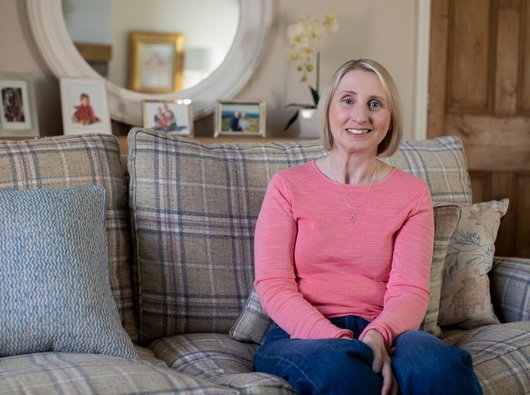Treatment for relapsed or refractory Hodgkin lymphoma
In a small number of people, Hodgkin lymphoma doesn’t respond to the first treatment (refractory disease), or comes back although it responded well at first (relapse).
What treatment will I have?
If your first treatment doesn't work, or if Hodgkin lymphoma comes back later, there are effective treatment options available.
The main treatment for relapsed or refractory Hodgkin lymphoma is chemotherapy followed by a stem cell transplant. Some people have a type of medicine called targeted therapy.
Chemotherapy followed by a stem cell transplant
If you’re otherwise fit and well, your doctor may recommend using higher doses of chemotherapy followed by a stem cell transplant (sometimes called a bone marrow transplant). This aims to give you healthy stem cells to replace those which are destroyed by the high dose chemotherapy.
Most people with Hodgkin lymphoma who need a stem cell transplant will have an autologous stem cell transplant. This is when your own healthy stem cells are collected before the high dose chemotherapy, then given back to you in through a drip.
Sometimes, if an autologous stem cell transplant doesn’t work, you might go on to have an allogeneic stem cell transplant. This uses stem cells from a donor, to replace your stem cells.
For more information about stem cell transplants, order or download our booklet, Blood stem cell and bone marrow transplants: The seven steps.
"I found things didn't always go to plan with my treatment. It was hard dealing with that uncertainty, but taking one day at a time and focusing on the positives helped."
Jade, diagnosed with Hodgkin lymphoma in 2018.

Targeted therapy
If you can't have a stem cell transplant, or if your lymphoma comes back after a transplant, your doctor might recommend drugs called targeted therapies. Targeted therapies are cancer treatments that can find and attack cancer cells. Some types of targeted therapy use your body’s immune system to target cancer cells.
The list below shows the targeted therapies that can be used to treat relapsed or refractory Hodgkin lymphoma. Under each drug, we explain when it’s recommended as a treatment on the NHS.
You might be offered this treatment if you’ve already had a stem cell transplant, or if a stem cell transplant isn’t an option for you and you’ve had at least two other treatments.
You have brentuximab vedotin as an infusion (drip) directly into a vein. The infusion takes around 30 minutes. You will usually have to go into hospital every three weeks for the treatment.
This treatment might be an option for you if you’ve already had a stem cell transplant and brentuximab vedotin.
You have nivolumab as an infusion (drip) directly into a vein. The infusion takes around 30 minutes to an hour. You may have nivolumab once every two or four weeks. Your treatment team will let you know how often you need to have it.
You might be offered pembrolizumab if any of these things apply to you:
- you’ve had a stem cell transplant that didn’t work, and you’ve not had brentuximab vedotin
- you’ve had at least two treatments already, and a stem cell transplant isn’t an option for you.
You have pembrolizumab as an infusion (drip) directly into a vein. The infusion takes around 30 minutes. You may have pembrolizumab once every three or six weeks. Your treatment team will let you know how often you need to have it.
"When I didn't get into remission after my first treatment, I felt like I'd failed. But my consultant reassured me we weren't finished, and there were lots of other treatments to try. I needed more treatment than I expected, but it worked."
Louise, diagnosed with Hodgkin lymphoma in 2012.

